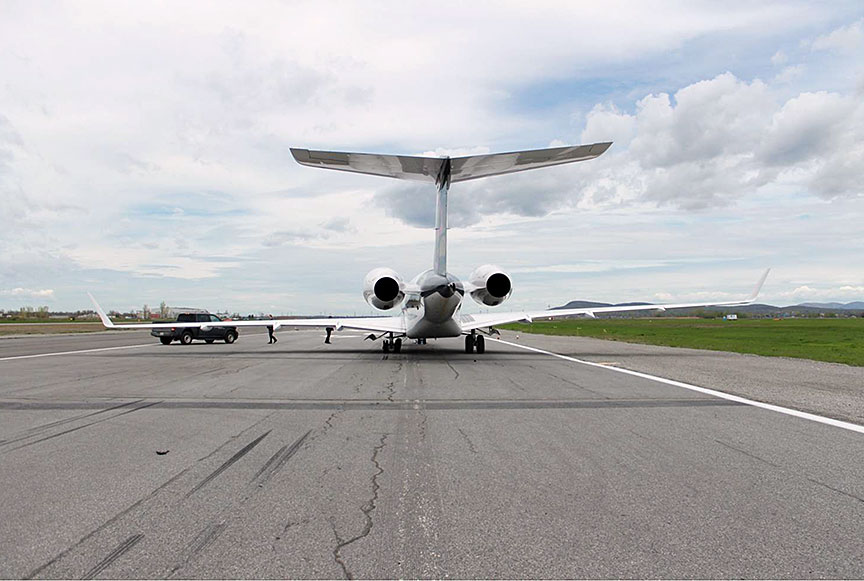Collision with runway lights on landing
Zetta Jet USA Inc.
BD-700-1A10, N888ZJ
Montréal/St-Hubert Airport, Quebec
The occurrence
On 15 May 2017, the Bombardier Global Express aircraft (registration N888ZJ, serial number 9071), operated by Zetta Jet USA Inc., was flying from Teterboro Airport, New Jersey, United States, to Montréal/St-Hubert Airport, Quebec, with 3 crew members and 1 passenger on board. At about 1055 Eastern Daylight Time, the aircraft touched down on Runway 06L at Montréal/St-Hubert Airport, partially outside the intended confines of the runway, which had been reduced to 75 feet wide and 5000 feet long owing to construction work. The aircraft struck 7 temporarily installed runway edge lights to the left of the runway. The pilot flying brought the aircraft back to the reduced-width runway centreline before it came to a stop approximately 300 feet from the end of the shortened runway. The aircraft sustained substantial damage. There were no injuries. The incident occurred during daylight hours.
Media materials
News release
Inadequate flight planning led to May 2017 collision with runway lights at Montreal/St-Hubert Airport, Quebec
Read the news release
Deployment notice
TSB deploys a team of investigators to the Saint-Hubert Airport, Quebec, following a runway excursion
Dorval, Quebec, 15 May 2017 - The Transportation Safety Board of Canada (TSB) is deploying a team of investigators to the Saint-Hubert Airport, Quebec, following a runway excursion involving a Bombardier Global Express aircraft. The TSB will gather information and assess the occurrence.
Investigation information
Download high-resolution photos from the TSB Flickr page.
Class of investigation
This is a class 3 investigation. These investigations analyze a small number of safety issues, and may result in recommendations. Class 3 investigations are generally completed within 450 days. For more information, see the Policy on Occurrence Classification.
TSB investigation process
There are 3 phases to a TSB investigation
- Field phase: a team of investigators examines the occurrence site and wreckage, interviews witnesses and collects pertinent information.
- Examination and analysis phase: the TSB reviews pertinent records, tests components of the wreckage in the lab, determines the sequence of events and identifies safety deficiencies. When safety deficiencies are suspected or confirmed, the TSB advises the appropriate authority without waiting until publication of the final report.
- Report phase: a confidential draft report is approved by the Board and sent to persons and corporations who are directly concerned by the report. They then have the opportunity to dispute or correct information they believe to be incorrect. The Board considers all representations before approving the final report, which is subsequently released to the public.
For more information, see our Investigation process page.
The TSB is an independent agency that investigates air, marine, pipeline, and rail transportation occurrences. Its sole aim is the advancement of transportation safety. It is not the function of the Board to assign fault or determine civil or criminal liability.
